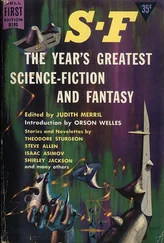“Milan then had a good clear atmosphere which was favourable for the observation of delicate planetary markings, and other observers who were well situated were able to see and draw many of the lines which Schiaparelli had discovered.
“It was, however, contended that such lines could not have any real existence, as it was asserted that they were too straight. It is quite true that straight lines on a rotating globe would appear curved when seen from some points of view, but if the objectors had carefully studied complete sets of drawings, they would have seen that the lines did assume a curved form in certain aspects of the planet.
“Then the very same people who denied the actuality of the lines because they were too straight, eagerly took up a suggestion that they were not actually narrow lines, but the edges of diffused shadings on the planet, apparently quite oblivious of the fact that the same objections must apply to them. Moreover, if there was difficulty in accepting the actuality of narrow lines, there must be immensely greater difficulty in believing that shadings could, in such a very large number of cases, all end in straight lines many hundreds or thousands of miles long, and always appear uniformly true, no matter upon what portion of the disc they might be seen, and whatever might be the angle of illumination.
“Besides, only a small proportion of the lines are connected with shadings. The shadings are more likely to be the result of the canals than the cause of the formation of illusory lines in so many cases.
“I have listened to many of these discussions, and have often been much amused at the tangle of inconsistencies in which some have involved themselves, by taking up fresh theories without regard to their previous contentions.
“As time went on each opposition of Mars brought the discovery of fresh lines, and numerous observers confirmed the reality of Schiaparelli’s work.
“Professor Lowell, the well-known American astronomer, took up the study of Mars in a most thorough and systematic manner, and has since practically made it his life’s work. An observatory was built at Flagstaff, Arizona, far away from towns and smoke, at an altitude of over 6000 feet above the sea-level, the site being specially selected on account of the clearness and purity of its atmosphere; while the observatory, being high up above the denser and more disturbed strata of air, afforded the most favourable situation possible for the proper observation of delicate planetary detail.
“There he continued the work which Schiaparelli had commenced, and, together with the colleagues with whom he has been associated, has, by long-continued and most systematic work, added greatly to our knowledge of Mars. Year after year has seen the addition of more lines on our maps of the planet, whilst many interesting discoveries have been made—one being that some of the fine lines were double, the second line always being equidistant from the first one throughout its whole length, no matter whether the lines were straight or curved.
“This caused a further outcry of objection. The observers were told that they had been overstraining their eyesight so that they ‘saw double,’ and also that they had been using telescopes not properly focussed. Such objections seem almost beyond argument, for no practical observer could use an improperly focussed instrument without at once discovering the defect.
“Besides, if the double lines were the result of eye-strain, or any other defect which might cause such illusions, all the lines would have been seen double, or at least all the lines running at the same angles; but as a matter of fact only a very small proportion of the lines were so seen, and it made no difference what position they occupied on the disc, or at what angles they were presented. Some of the doubles were, in fact, curved lines; and another point was that in some cases they were only doubled at certain seasons of the year.
“Other observers who saw the lines were charged with having studied the maps of Schiaparelli and Lowell until they had become obsessed with the lines, and when they looked through the telescope simply fancied they saw them!
“In England our atmospheric conditions are seldom really favourable to the proper seeing of the finer detail, and the very faint lines cannot be seen at all. The lines that are visible do not appear thin and sharp as they do to observers in more favoured climes, but rather as diffused smudgy lines, and so they are drawn by the observers. On a few occasions of exceptionally good seeing they have, however, been seen and drawn as finer and sharper lines.
“The visibility of the lines was, however, confirmed by so many observers of known integrity, and from so many different parts of the world, that the objectors were at last compelled to abandon the position they had occupied. Then a new theory was started, viz. that the lines were actually seen but did not actually exist, being really optical illusions arising from the apparent integration, or running together in linear form, of various small disconnected markings which were viewed from beyond the distance of clear seeing.
“The manner in which it was sought to prove the correctness of this theory appeared to me at the time (and still does so) as most weak and fallacious, and certain experiments I made only strengthened that opinion. However, scientific people accepted it as proof.
“In making this experiment schoolboys were seated in rows at different measured distances from a map of Mars, which they were told to copy. The map showed all the well-known dark patches and markings, but no fine lines. About the places where some of those lines should have been, dots, curls, wisps, &c., were inserted at irregular distances, and not always exactly where the lines should have been shown. The inevitable result was that the boys who were too far away to see clearly saw these small markings as continuous straight lines, and so drew them. In the circumstances they could not do otherwise; for if sufficient marks were inserted nearly in alignment, they would necessarily produce the effect of lines.
“These drawings were then acclaimed as proving that the lines seen on Mars were only discrete markings viewed from beyond the distance of clear seeing, and that the network of lines seen and drawn by so many skilled and careful observers of Mars had no actual existence upon the planet. Thus all their work was completely discredited.
“Experiments like these could not possibly prove any such thing, because it would be easy to insert in a map various markings which, when viewed from a distance, would appear to form almost any design that one might choose to depict. Any desired effect might thus be obtained; and I have seen many pictures so formed in which the illusion was perfect. When viewed from a distance each appeared to be a picture of something entirely different from what was seen when it was viewed from a near standpoint.
“The linear illusion could not arise from a mere multiplicity of faint scattered markings, but all the more conspicuous markings must be in alignment. It seems impossible to imagine that so many hundreds of lines on Mars could thus fortuitously be formed by illusion, and every line be connected to some definite point at each end.
“To argue that because illusory lines can be formed as in these experiments proves that the Martian lines are also illusions is claiming far too much. For instance, if I drew what was actually a map of South Africa, and was so seen at close quarters, yet in consequence of the insertion of numerous small marks and shadings formed a portrait of Lord Blank when viewed from a distance, it would be very far indeed from proving that every map of South Africa was a portrait of the noble lord, or that his portraits were all maps of South Africa.
Читать дальше












